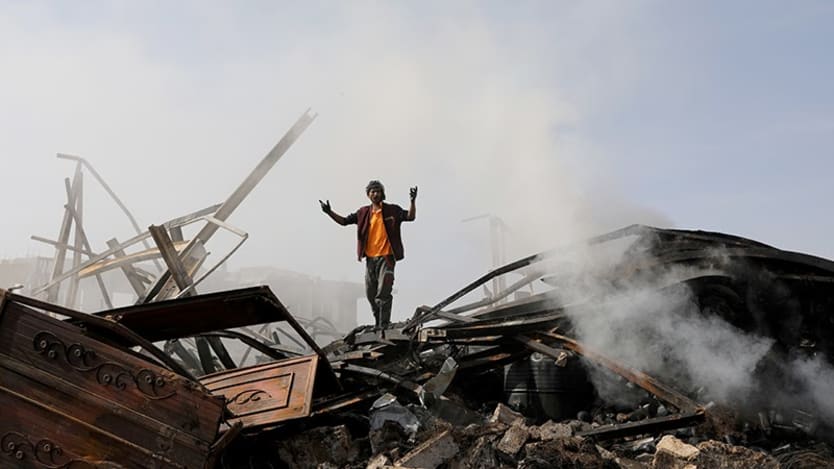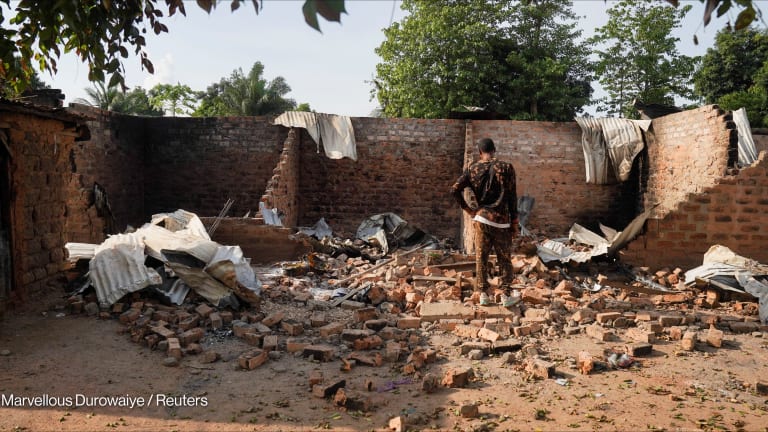
ST. PAUL, Minn. — A new U.S. approach to fragile states provides an opportunity to spur widespread reform in the existing “fragmented international system” that deals with fragile states, an Organisation for Economic Co-operation and Development representative said Monday.
Jonathan Marley, who leads OECD’s “States of Fragility” team, said levels of fragility — which were already deteriorating even before the COVID-19 pandemic — must now contend with the additional shocks of 2020. This drastically worse situation created in just a span of 12 months makes it all the more imperative that the forthcoming U.S. Global Fragility Strategy is successful in a world where development strategies too often work completely independent of one another, he said.
“The question becomes: To what extent will the U.S. choose to lead through [the 2019 Global Fragility Act], and to what extent do they drive partnerships with the potential that very clearly exists in this act?” Marley said Monday at the Alliance for Peacebuilding’s PeaceCon 2020. “Arguably the real potential is the momentum that the application of this act could bring internationally, so there is a potential for it to drive collaboration, to build momentum for collective strategies.”
Better international coordination of analysis, operational intent, implementation, and monitoring and evaluation of activities in fragile contexts as a result of the Global Fragility Strategy could spur reform and better effectiveness in the entire prevention and stabilization system, Marley said.
The Global Fragility Act outlines a new, prevention-based approach to fragile and conflict-affected states and a framework for more effective interagency cooperation between the U.S. Agency for International Development, State Department, and Defense Department. The GFA requires the U.S. administration to select at least five priority countries or regions in which to implement 10-year pilot projects.
The Global Fragility Strategy, including country and regional selections, was due to Congress in September but has yet to be made public by the State Department, after multiple delays.
Once the selections are finalized, the administration must develop specific strategies for each country or region. Those strategies are mandated by the GFA to be publicly released this month — another deadline that is likely to be missed.
Marley said he wants to see the Global Fragility Strategy dovetail with OECD’s triple-nexus framework, which examines the intersection of humanitarian, development, and peace efforts. The U.S. strategy has the potential to build momentum around that approach, he said.
“What we’ve tried to build on with the nexus recommendation internationally is bringing together perspectives across the pillars of the nexus. You’re bringing together a better … understanding to the political decision-makers, thereby empowering them to make better decisions,” Marley said. “The potential is there to strike a better balance not just internally, but externally with other partners.”
A U.S. Institute of Peace report released Monday that outlines recommendations for the Global Fragility Strategy amid the pandemic also includes a call for better coordination between the U.S. government, international partners, and the governments of fragile states. Closer on-the-ground coordination requires development of country coordination platforms, with joint assessments, that can oversee implementation and adaptation of country-level strategies.
“Country coordination platforms organize national and international stakeholders into a three-tiered structure that allows them to align their activities, including potentially large-scale operations and pools of funding,” the report says. “The GFA’s most important directive is arguably that the US government adopt an adaptive management approach to conflict prevention, peacebuilding, and development in the context of more robust country coordination.”
“The real potential is the momentum that the application of this act could bring internationally, so there is a potential for it to drive collaboration, to build momentum for collective strategies.”
— Jonathan Marley, “States of Fragility” team lead, OECDStaffers on one congressional committee responsible for oversight of the Global Fragility Act said Monday at PeaceCon that while they have so far been forgiving of President Donald Trump’s administration missing deadlines set out in the legislation for development of the strategy, there is some concern already that all relevant agencies and departments are not appropriately participating in the interagency process to develop the strategy.
“Making sure all the different bureaus and agencies are engaged — that’s challenging,” said Meghan Gallagher, a staff member on the House Foreign Affairs Committee. “This really does require senior leadership and from within many different entities within these departments and agencies.”
The legislation intentionally gives the executive branch wide latitude to implement the pillars of the GFA, said Mark Iozzi, HFAC deputy chief counsel, but Congress reserves the right to be more prescriptive if the administration is not acting in line with the intent of the law.
In the end, politics will determine how effective new U.S. fragility policy can be, Marley said.
“The big question for me is: How much leadership are they going to choose to put behind it?” Marley said of the U.S. government. “Are they willing to use it to drive partnerships and willing to align the potential of the act with the multilateral frameworks that already exist?”








